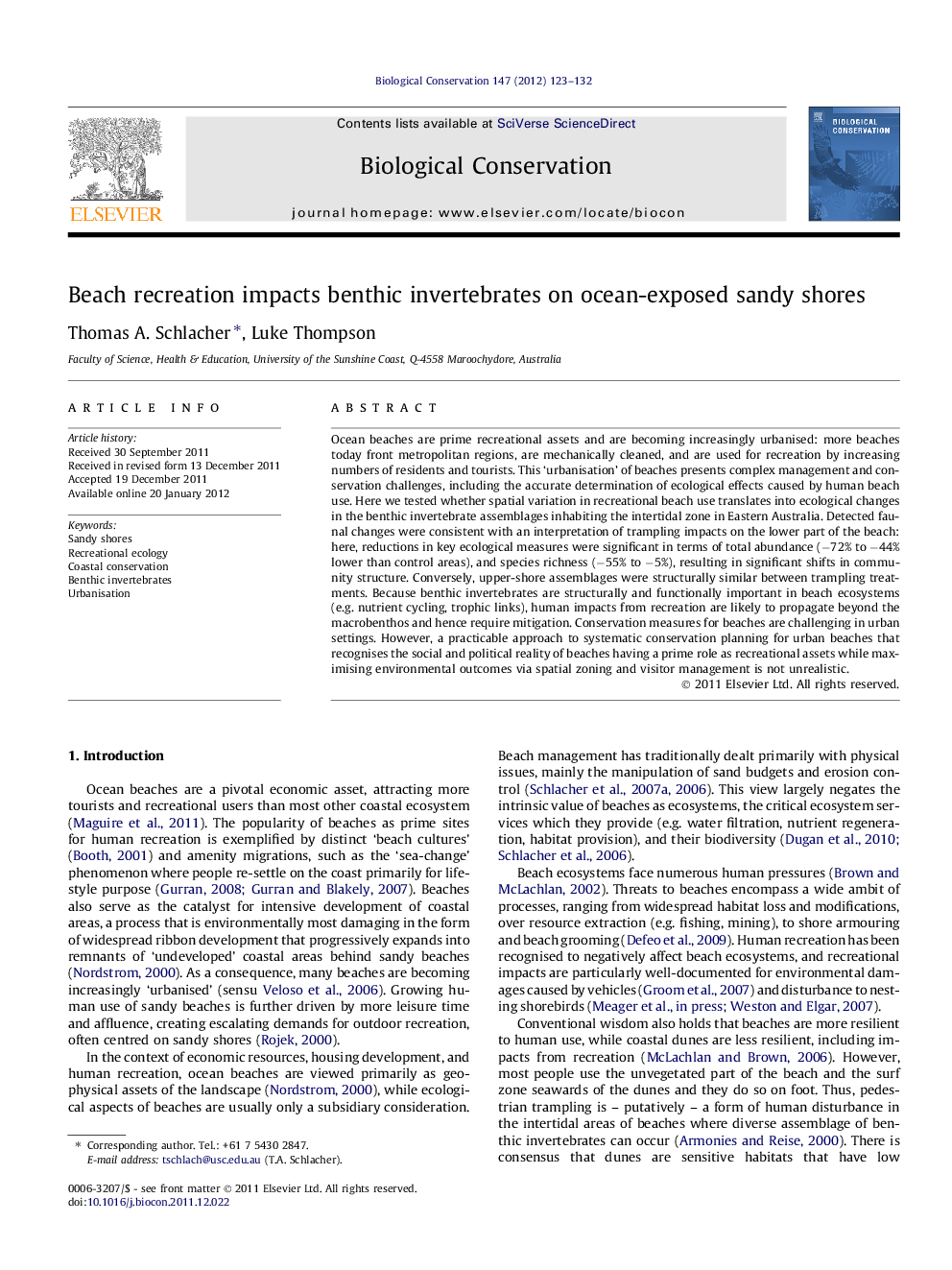| Article ID | Journal | Published Year | Pages | File Type |
|---|---|---|---|---|
| 4385290 | Biological Conservation | 2012 | 10 Pages |
Ocean beaches are prime recreational assets and are becoming increasingly urbanised: more beaches today front metropolitan regions, are mechanically cleaned, and are used for recreation by increasing numbers of residents and tourists. This ‘urbanisation’ of beaches presents complex management and conservation challenges, including the accurate determination of ecological effects caused by human beach use. Here we tested whether spatial variation in recreational beach use translates into ecological changes in the benthic invertebrate assemblages inhabiting the intertidal zone in Eastern Australia. Detected faunal changes were consistent with an interpretation of trampling impacts on the lower part of the beach: here, reductions in key ecological measures were significant in terms of total abundance (−72% to −44% lower than control areas), and species richness (−55% to −5%), resulting in significant shifts in community structure. Conversely, upper-shore assemblages were structurally similar between trampling treatments. Because benthic invertebrates are structurally and functionally important in beach ecosystems (e.g. nutrient cycling, trophic links), human impacts from recreation are likely to propagate beyond the macrobenthos and hence require mitigation. Conservation measures for beaches are challenging in urban settings. However, a practicable approach to systematic conservation planning for urban beaches that recognises the social and political reality of beaches having a prime role as recreational assets while maximising environmental outcomes via spatial zoning and visitor management is not unrealistic.
► Ocean-exposed sandy beaches are the prime sites for human recreation on the coast. ► Many beaches are becoming increasingly urbanised and receive more visitors. ► Recreation lowers abundance and biodiversity of benthic invertebrates. ► Invertebrates are ecologically important, warranting management of these impacts. ► Main conservation options are spatial use zoning and strategic visitor management.
